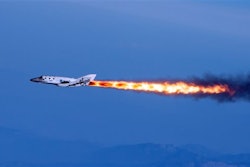Root cause failure analysis is a technology for objectively identifying all potential failure causes, and then objectively and systematically identifying the likelihood of each potential cause. This article describes how root cause failure analysis identified and eliminated recurring Apache main rotor blade rejections.
During the Apache helicopter’s first decade of production, the helicopter suffered main rotor blade disbonds both during the manufacturing process and in service. Composite Structures Division in Monrovia, California (then an Alcoa subsidiary) manufactured the rotor blades, which they supplied to McDonnell Douglas Helicopter Company (the Apache manufacturer).
Rotor Blade Vulnerability and Survivability
The Vietnam War marked the U.S. Army’s first wide-scale use of helicopters as a modern warfighting tool. The Army’s iconic UH-1 Huey suffered from a serious weakness, though, and that was its vulnerability to small arms fire. The helicopter fuselage was fairly robust (it was not uncommon to see helicopters with multiple bullet holes still flying), but the Huey’s rotor blades were extremely vulnerable. The Army learned the hard way that if a single rifle bullet struck a Huey rotor blade it would fail, resulting in loss of the helicopter and its crew.
Based on the above, the Apache requirements included greatly-improved main rotor blade survivability. The Army wanted the Apache’s blades to survive direct hits from small arms fire up to and including the Russian 23mm high explosive anti-aircraft projectile.
To meet this requirement, the Army and McDonnell Douglas designed the Apache rotor blade with redundant load paths. Each blade consisted of four stainless steel sheet metal spars. These spars were bonded together to form the blades’ structure, with each running the entire length of the helicopter blade. If the blade were struck in any one of its four spars, the remaining spars would keep the blade together and the helicopter could return to base.
Manufacturing State-of-the-Art Combat Helicopter Components
Composite Structures Division manufactured the Apache main rotor blades using a typical composite layup and bonding process. The steps included:
- Suppliers produced components required for the blade (including the stainless steel spars described above).
- Composite Structures either source inspected or inspected parts in its Receiving Inspection area.
- The parts went to stock.
- Composite Structures issued parts kits including metal parts, tooling, and adhesives to a clean room layup area.
- In the clean room layup area, Composite Structures technicians assembled the parts in special assembly tools. This operation consisted of applying adhesives to the surfaces to be bonded, assembling the parts and the adhesive, and then enclosing the parts in a foil bag.
- The assembled blade and fixture entered an autoclave, which subjected the assembly to a vacuum and a specified temperature profile to cure the adhesive.
- After the autoclave operation, technicians removed the blade from the fixture, stripped the bagging from the assembled rotor blade, and moved the rotor blade to the next assembly operation.
To continue reading the full article, click here to visit our partner publication, IMPO.























